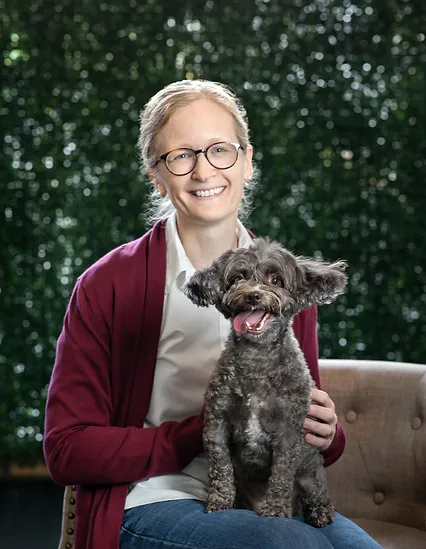DOG TRAINING BY VALERIE
Valerie Balwanz, CBCC-KA, CPDT-KA, PMCT
Valerie Balwanz is a behaviorist who generously shares her expertise with the CAF to help new pet owners. Visit her website for more information about training, behavioral issues, and to contact her.
BYTES FROM THE BEHAVIORIST
This article is the second of three addressing the topic of Separation Anxiety
Misconceptions About Separation Anxiety
There are a number of misconceptions about Separation Anxiety. Let’s examine a few and understand why these aren’t true.
- The guardian caused it by pampering their dog
- The guardian caused it by letting their dog sleep in the bed
There is no such thing as too much love. Trying to “act aloof” can damage the dog-human bond and increase the likelihood of separation issues developing. The truth is, despite being widely studied, we don’t really know what causes Separation Anxiety.
- If you just leave the dog, they’ll eventually realize you’re coming back
- Puppies will just grow out of it
The thought behind these statements is that dogs will habituate to your absences. The flip side of habituation is sensitization: if a dog doesn’t get used to something, they get worse. Dogs with separation anxiety will sensitize if you continue to leave them alone, not habituate.
- My dog is acting this way out of spite because they’re mad that I left
It is easy to feel this way when you see that your personal items have been destroyed. Spite and revenge (along with guilt) are simply not on our dog’s emotional spectrum. The panic a dog experiences when alone is an involuntary response.
- If you work on Stay, Walk away, Return and Treat, you will learn to be okay with absences because you always come back and give a treat
- If you walk around picking up/ putting down keys and wear your coat around the house your dog will learn these things don’t predict your departure
- You should leave a separation anxiety dog with a food toy to distract them
These are common training exercises suggested for addressing separation anxiety. The first is operant behavior where a dog learns to perform for a piece of food. This is going to be self-limiting. For a dog that panics about being left alone, there is no piece of food that is worth waiting 2, 3, or 4 hours for. The second strategy might perplex your dog for a bit, but what happens when you need to leave for real? You’ll pick up your keys and put on your coat and those things will again precede an absence. Your dog won’t feel any less panicked that you are leaving. A food toy can provide a temporary distraction, but once finished, the dog will experience panic or they might not eat at all. None of these strategies address the root of the problem: panic about alone time.
- Separation Anxiety cannot be cured
Separation Anxiety can be cured, that is the topic of next month’s article!

